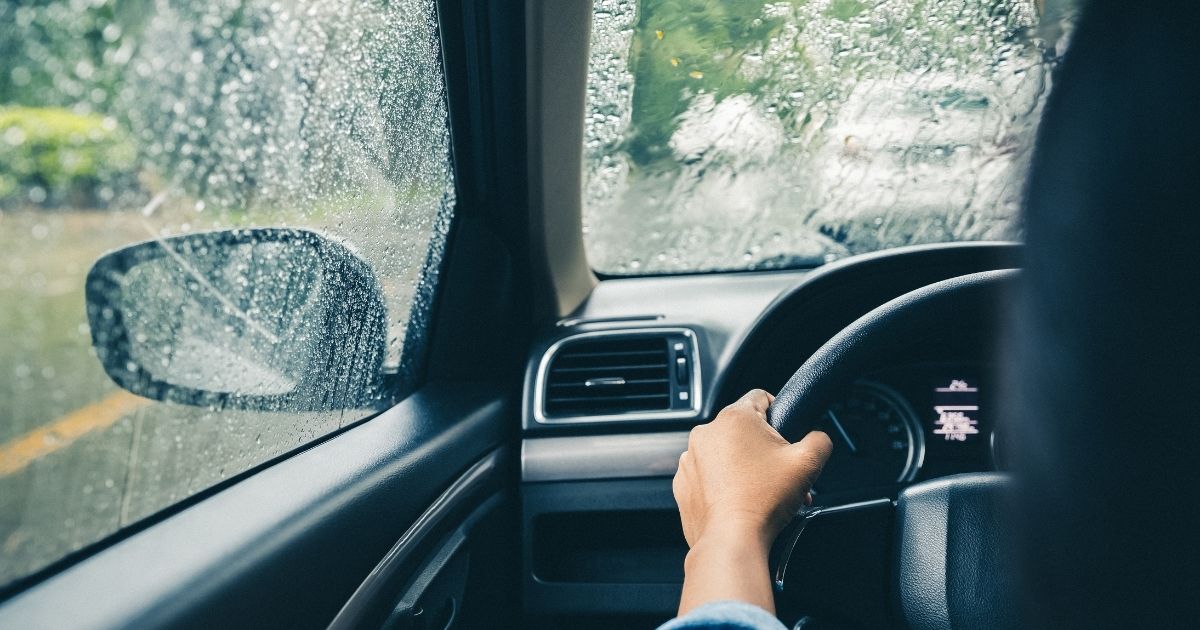What Are Safety Tips for Driving in the Rain?
Published: Sep 12, 2022 in Auto Accident, Personal Injury
When driving in the rain, you must adapt to the wet road conditions. Wet roads affect traction and handling, and the rainy weather can also reduce your visibility. These conditions might cause you to get into a car accident if you are not careful.
However, the rain is no excuse for causing a car wreck. Fortunately, some basic precautions can help you avoid a weather-related wreck. The following are several safety tips for driving in the rain.
Inspect Your Tires
You need tires that are properly inflated so that each one can have good contact with the road. The tread needs to be in good condition to help expel water from the contact patch. The contact patch is the part of a tire that is in contact with the roadway. If the tread is worn or damaged, the contact patch might not be good enough to maintain traction on wet roads. The same is true if the tire is underinflated or overinflated.
A quick check of the tire pressure and tread condition can help you maintain traction on wet roads. It also helps when you keep the tires with the best tread on the rear so that your vehicle will remain as stable as possible.
Adjust Your Speed
Speed is a significant factor in many car accidents and roadway fatalities. The faster that you drive over the posted speed limit, the more likely you are to cause an accident. When roads are wet, vehicle speed becomes even more important. Always adjust your speed to the road conditions.
Increase Your Following Distance
You should increase your following distance when behind other vehicles when it is raining. Wet roads require longer stopping distances so that you can stop safely and avoid dangerous situations.
Normally, it is recommended to have a three-second following distance between your vehicle and the one in front of you. When the roads are wet, you should follow other vehicles by as much as four seconds.
When drivers do not adjust their following distance, they run a greater risk of causing an accident by rear-ending another vehicle. The faster you are going, the more likely you are to cause an accident.
If you are driving with bad tires on rainy roads, following too closely could cause you to lose control and strike one or more vehicles.
Remain Calm
Wet roads greatly affect handling. Your vehicle will not be as stable on wet roads as it is on dry ones, especially if you have worn or improperly inflated tires. Stepping on the gas, panic braking, or erratic and sudden lane changes could cause you to lose control of your vehicle. For this reason, you should always remain calm when driving. If you are anxious, or if the road conditions are particularly dangerous, safely pull over until the weather has cleared.
Use Good Wiper Blades and Fluid
You need to be able to see clearly to drive safely. If you have worn-out windshield wiper blades, you will have a much harder time seeing clearly. You need to ensure the wiper blades work as intended and clear the windshield of water every time they make a pass over the glass. Wiper fluid will also help clear any road grime from the shield.
Good wiper blades and fluid are especially important at night. Without them, the glare from the headlights of oncoming vehicles could blind you.
Check and Use Your Lights During the Daytime
Road visibility can be especially bad on rainy days. Dark gray clouds and a downpour or even a mist could greatly reduce your visibility. You can make your vehicle more visible and see other vehicles more quickly by driving with your lights on during the day.
Many vehicles have daytime running lights that turn on automatically to make them more visible during the daytime. You might have to turn on your headlights if your vehicle does not do so automatically. If so, you should use the dimmer lights and do not drive with the bright lights on during the day.
Do Not Drive Through Flooded Roads
You might encounter a flooded roadway while driving in the rain. If you see even a small amount of water pooling in the roadway, you should not drive through it. Going around by taking other roads whenever possible is the best way to avoid a flooded road.
Driving through flooded areas could cause your vehicle to hydroplane and cause you to lose control of your car. The splashing water also might get into the engine compartment and cause your vehicle to stall.
Flooded sections also might cause tree limbs and other debris to accumulate in the road.
Watch for Ice on Bridges and Overpasses
One of the greatest dangers that drivers experience when it is raining occurs on bridges and overpasses when the air temperature is nearly freezing. Ice typically forms on bridges and overpasses first because there is no warm earth beneath them to help insulate the road surface against the cold air. You should pay close attention when driving over bridges and overpasses, and slow down to ensure the best possible traction and handling.
Some bridges and overpasses also might cause your car to lift slightly. That sudden change might cause your vehicle to hydroplane and lose traction.
Edwardsville Car Wreck Lawyer at The Cates Law Firm Can Give You Legal Assistance After a Rain-Related Accident
You can get legal help after a weather-related wreck from our experienced Edwardsville car wreck lawyer at The Cates Law Firm. Call us at 618-277-3644 or contact us online to schedule a free consultation. Located in Swansea, Illinois, we represent clients in St. Louis, Belleville, East St. Louis, Edwardsville, Granite City, Waterloo, Chester, Carbondale, St. Clair County, Madison County, Monroe County, Randolph County, and other regions throughout Southern Illinois.
